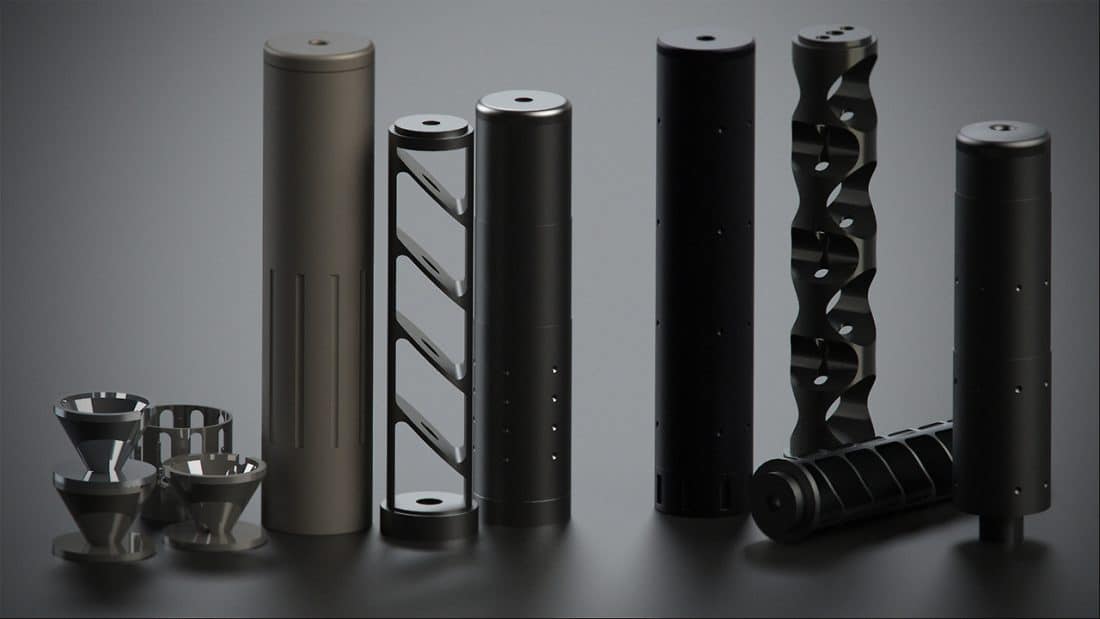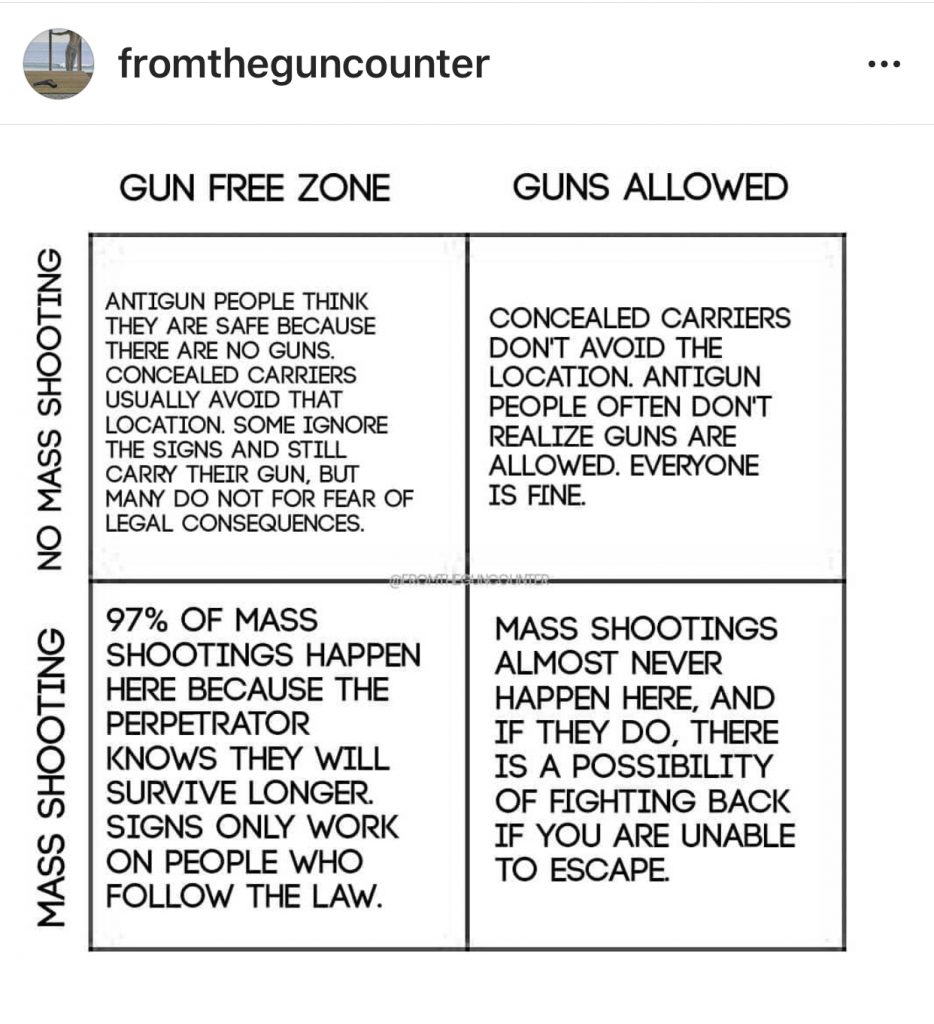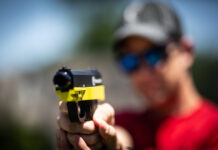
The silencer the silencer the silencer… oh, and the silencer. Talking heads are running hard on the National Firearms Act controlled items.
Silencers or suppressors are devices added to the muzzle of a firearm to reduce the extremely loud gas discharge of a gunshot by about 25-30 decibels. That is approximately the same noise reduction you get from putting in properly rated earplugs. The term is legally and practically interchangeable, either word means the same device.
AP News opened their analysis with this however…
“Nightmare scenario, escape detection, more carnage” all credited to the use of a suppressor. Yet Craddock (the shooter) didn’t escape detection at all, he died in a gunfight with the police. An attack on the workplace fits the ‘nightmare scenario’ descriptor entirely independently of the suppressor. The suppressor didn’t enable the deaths of 12 people, his actions with his access did.
What do we know?
Not as much as we would like. Confirmation on whether he owned the suppressor for his .45 legally under the NFA hasn’t been confirmed however the firearms were (as last reported) legally acquired. If the NFA paperwork were done there is no reason the suppressor wouldn’t be legal either.
We know Craddock was a public works engineer in good employment standing. That he tendered resignation with a 2 week notice earlier that same day for “personal reasons” and then attacked his place of employment killing 12 and wounding 4. He was very familiar with the building, the people there, and there was no known reason to bar Craddock from the premises as he was still employed.
Police response time was two minutes. The responding officers searched and four of them engaged Craddock in a firefight on the second floor, wounding him fatally.
Did the suppressor/silencer matter?
No.
“A suppressor does not alter the lethality of the weapon at all. All it does is just limit the noise it makes,” said Gregory Shaffer, a retired FBI agent who was a member of the bureau’s elite Hostage Response Team. “It doesn’t increase the rate of fire. It doesn’t do anything other than make it more comfortable to shoot because it’s not so loud.” – USA Today
In a broad analysis of the entirety of the situation a suppressor provides an immaterial advantage. The suppressor didn’t give Craddock access to the building interior, familiarity with the building floor plan, or a rapport with his coworkers. His employment did.
A suppressor on a .45 does reduce noise to a notably significant degree.
Because .45 ACP is a subsonic round (slower than the speed of sound) it already does not produce one of the two noisest factors of a gunshot, the sonic crack by breaking the sound barrier. The suppressor lowers the second factor, the noisy gas discharge at the muzzle. A suppressed .45 is a “quiet” firearm. Craddock, using the suppressor, limited one of his detectable signatures and that was the ‘advantage’ gained. This does nothing to limit any aware individuals from reacting to his actions or shooting back (as officers did).
Would a louder firearm have changed the building occupant’s reaction?
Possibly… but not likely. Those not immediately under attack, if they recognized the noise independently of other factors, could evacuate. There is nothing in an office building remotely like good cover. Looking at that factor alone the suppressor appears to be a lethality enhancement. Looking at the situation and removing the suppressor however wouldn’t have changed the access for, speed of, and surprise achieved for the attack.
While talking know-nothings may focus on the silencer, experts focused on those lethal modes of action.
Drawn Conclusions
Craddock’s attack on his place of work seems to be largely to totally without warning. No threats to his employer (the DPW), the city, or other motives are available at this time. There was no reason for DPW or Law Enforcement to consider him a special threat. This may end up being an unknown motive attack similar to Mandalay Bay.
If there are no warning signs there cannot be a build up or intervention beyond general active shooter/workplace violence preparation. Physical onsite security and individual response procedure for the DPW building is not known at this time: emergency medical preparedness, lockdown procedures, etc.
What is known is that Craddock had full access to the building as a badged and active employee. The majority of offices everywhere are woefully underprepared for this emergency. It is the Department of Public Works, not a forward operating base (those get breached too by the way).
After the initial emergency call was placed the response to site is listed at 2 minutes. That’s as textbook a perfect response time as could be asked for in any emergency. Officers entered, found Caddock, and ended the threat. Caddock died of his wounds.
Defensive response could be improved for the site in two ways. Dedicated armed staff or allowance of concealed carry by staff and contractors. Dedicated uniformed armed staff would be a priority target in an attack but their presence may further deter an attack and depending on their level of training and equipment they can survive the initial shots and respond. Concealed carry allowed on site undisclosed would mean any potential attacker is walking into a proverbial minefield of people who can shoot back without a reliable way, other than first hand knowledge from conversations, to target armed persons. This situation also produces a strong deterrent effect by shifting the survivability odds and theoretical time unopposed during the attack drastically against them.

This security theory vs security theater. Theater looks good on paper but is easily circumvented. Theory acknowledges limitations of all approaches and puts policies in place to best generate effective responses.
Final thoughts
12 people died in Virginia Beach because their coworker decided to take their lives. Not because of guns, silencers, the phase of the moon, high tide, or any other extrapolative backflip.
Presidential Candidate Cory Booker couldn’t answer a simple question when asked about this attack. Booker couldn’t name a policy change that would have prevented this, only trot out the asinine party platitudes of “thoughts and prayers aren’t enough!”
You’re right Cory, thoughts and prayers are not enough. Hope is not an effective emergency plan, so perhaps we start listening to people who are experts in the area of emergency planning. This dedicated cadre of professionals who don’t feel like lying about safety for the sake of feelings, bruised egos, or political points might have an idea.



